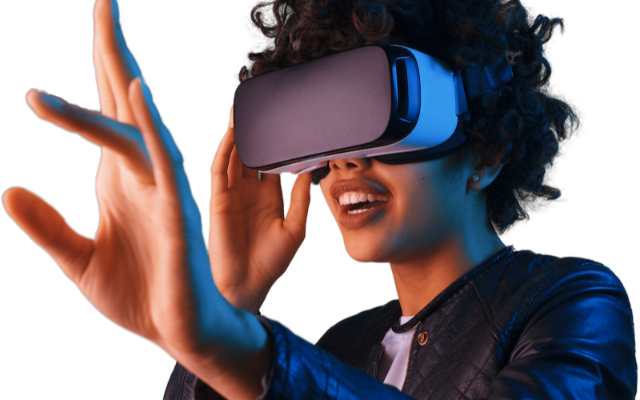Email Us : contact@sprginfotech.com
Virtual Reality (VR) is an emerging technology that’s gaining popularity among businesses looking to provide immersive marketing experiences to their customers. VR can transport users to different locations, simulate real-life situations, and provide interactive experiences that can’t be replicated through traditional marketing methods. In this article, we’ll explore how businesses can use virtual reality for immersive marketing experiences and how to get started.
How to Use Virtual Reality for Immersive Marketing Experiences
- Set Clear Objectives
The first step in using VR for immersive marketing experiences is to set clear objectives. What do you want to achieve with VR? Do you want to promote a product, showcase a brand, or provide an educational experience? Once you have a clear idea of your objectives, you can start planning your VR experience.
- Create Engaging Content
The key to a successful VR experience is to create engaging content that resonates with your audience. Your content should be interactive, immersive, and provide value to your audience. You can create 360-degree videos, virtual tours, simulations, and games that allow users to interact with your brand in a unique and memorable way.
- Choose the Right Platform
There are several VR platforms available, and it’s important to choose the right one for your business. You can opt for a standalone VR headset like the Oculus Quest, which offers a wireless and standalone experience, or a PC-based headset like the Oculus Rift, which offers more advanced features but requires a powerful computer. You can also opt for mobile VR, which allows users to experience VR through their smartphones.
- Plan Your Distribution Strategy
Once you have created your VR experience, you need to plan your distribution strategy. You can showcase your VR experience at events, trade shows, or pop-up stores, or make it available for download through VR platforms like Steam, Oculus Store, or Google Play. You can also promote your VR experience through social media, email marketing, or influencer partnerships.
- Measure Your Results
Measuring your results is crucial to understand the effectiveness of your VR marketing campaign. You can track metrics like engagement, views, shares, and conversions to determine the impact of your VR experience. You can also gather feedback from users to improve your VR experience and make it more engaging and effective.
- The Power of Visual Storytelling in Digital Marketing
- How to Use Chatbots to Enhance Your Customer Service
- How to Use Interactive Content for More Engaging Marketing
In conclusion, VR is a powerful tool for immersive marketing experiences that can provide businesses with a unique and memorable way to engage with their audience. By setting clear objectives, creating engaging content, choosing the right platform, planning your distribution strategy, and measuring your results, businesses can leverage the power of VR to achieve their marketing goals and stand out from the competition.

